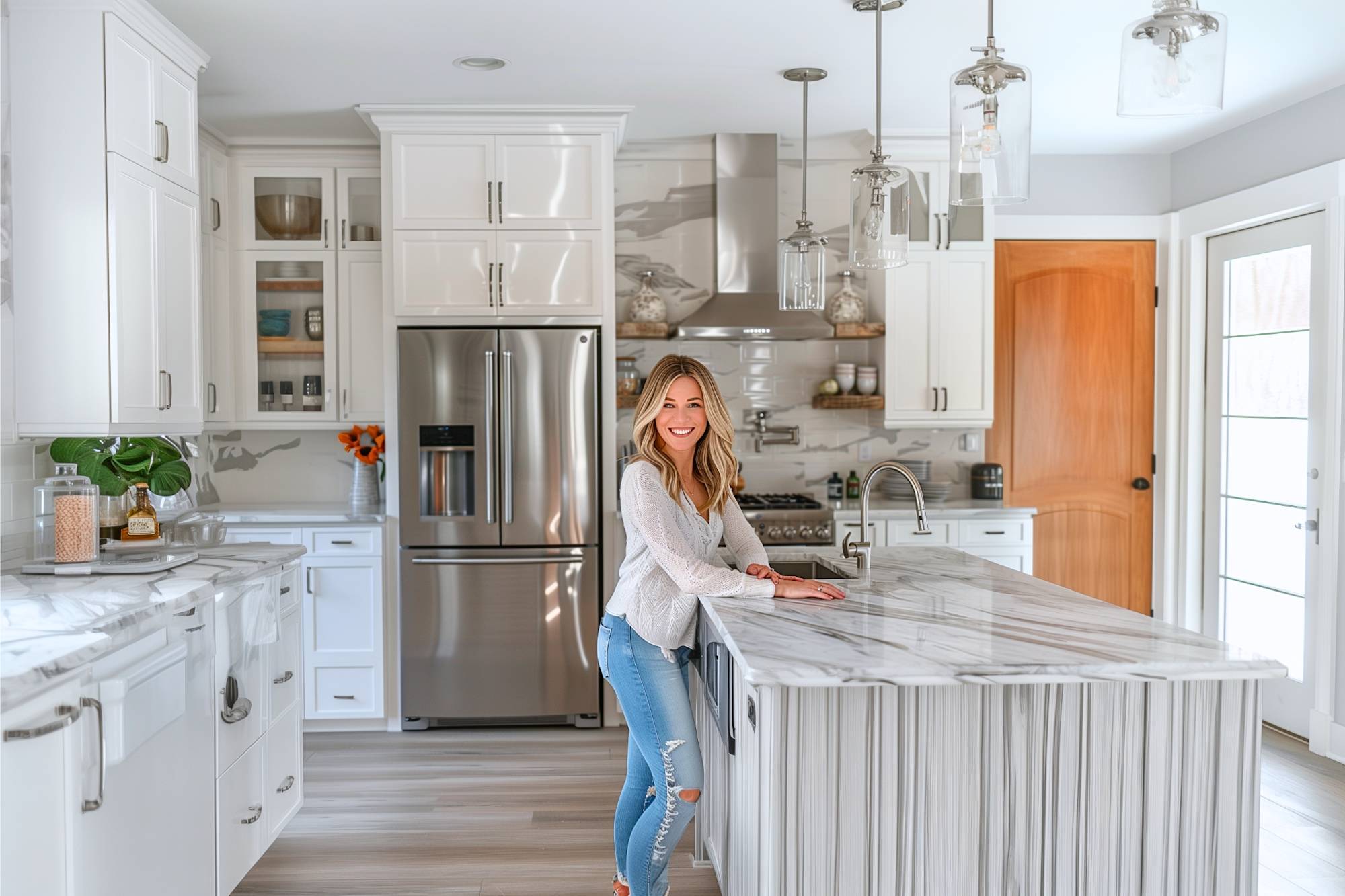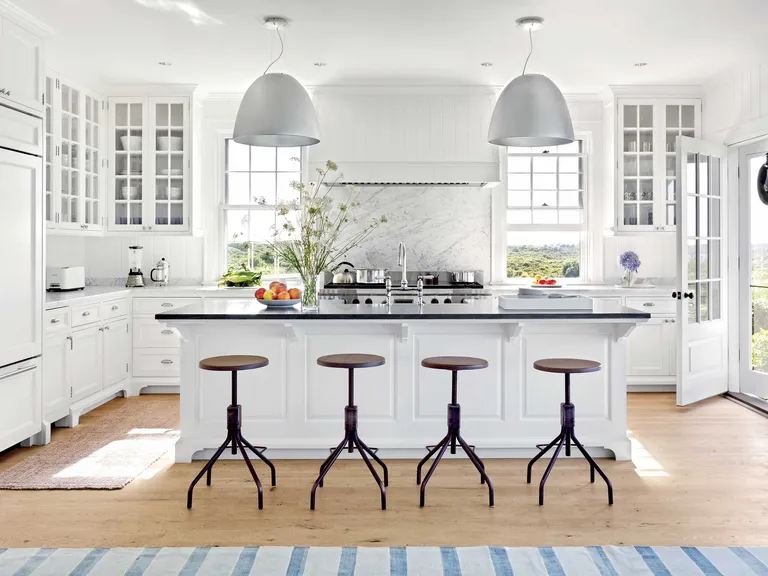Exactly How to Plan the Perfect Kitchen Restoration on Any Kind Of Spending Plan
Embarking on a kitchen area restoration can be a complicated yet satisfying venture, particularly when navigating the complexities of spending plan constraints. A well-executed strategy calls for a thorough evaluation of your existing area, the facility of clear concerns, and a reasonable budget plan that accounts for unanticipated expenditures. Comprehending these aspects is vital, as they could determine the success of your remodelling.
Examine Your Present Cooking Area
Prior to getting started on a kitchen area improvement, it is vital to extensively assess your current kitchen to recognize its weaknesses and strengths. A well-designed cooking area facilitates workflow, so identifying traffic jams or uncomfortable setups is crucial.
Next, scrutinize the condition of your kitchen counters, devices, and cupboards. Take note of storage space options, as poor storage space can impede kitchen area performance.

Last but not least, gather responses from member of the family that on a regular basis use the kitchen. Their understandings can disclose specific pain points and wanted attributes that may not be immediately evident. This thorough assessment will certainly act as the foundation for your improvement strategy, guaranteeing you prioritize renovations that straighten with your cooking way of living and aesthetic goals.
Set a Realistic Spending Plan
Establishing a practical budget plan is a crucial step in the kitchen remodelling process, as it directly influences the range and high quality of your project. Begin by establishing your overall economic capability, including just how much you can allocate without straining your financial resources. Research study the typical costs connected with various kitchen upgrades, such as cabinetry, countertops, appliances, and flooring, to get a clear understanding of potential expenses.
It's important to represent unforeseen expenses, which can occur throughout restorations. A backup fund of 10-20% of your overall budget can help ensure that you are planned for any type of surprises. In addition, think about getting several quotes from distributors and contractors to contrast pricing and guarantee you are getting the most effective value for your financial investment.
When setting your budget, focus on essential elements that will certainly enhance the functionality and allure of your kitchen. Remember that a tactical spending plan not only assists prevent financial strain but likewise adds to a smoother restoration procedure (kitchen renovations calgary). By taking the time to develop a sensible budget plan, you can navigate your kitchen area remodelling with confidence, ensuring an enjoyable end result that lines up with your goals and monetary capacities

Prioritize Your Improvement Objectives
A house owner's success in a cooking area restoration mainly depends upon plainly focusing on restoration objectives. Prior to starting any kind of project, it is necessary to develop what aspects of the cooking area are most essential to improve. These concerns might include boosting capability, raising storage space, updating appearances, or ensuring energy efficiency.

Begin by evaluating the existing cooking area layout and determining discomfort points. Think about exactly how the area is utilized everyday and what modifications would certainly assist in much better operations and usability. If cooking is a main activity, it may be beneficial to focus on the setup of high-grade appliances or an extra reliable format.
Additionally, entail member of the family in the decision-making process to recognize their needs and choices. This joint approach makes sure that the improvement addresses everyone's problems while fostering a cohesive vision.
As soon as the objectives are established, categorize them into 'must-haves' and 'nice-to-haves.' This category will assist the decision-making process throughout the remodelling, helping to maintain the project focused and straightened with the property owner's vision, ultimately resulting in a enjoyable and successful kitchen area transformation.
Explore Affordable Choices
Numerous cost-efficient alternatives are available for house owners seeking to remodel their cooking areas without damaging the financial institution. One of the most impactful changes is refinishing cabinets rather of changing them. A fresh coat of paint or brand-new equipment can significantly improve the look of old cabinets at a portion of the cost.
Another affordable approach is to choose laminate or vinyl flooring, which can simulate the look of extra pricey products while being very easy and resilient to preserve. In addition, consider buying carefully used or surplus materials from home improvement stores or on-line markets, which can provide premium items at minimized prices.
When it involves countertops, choices like butcher block or recycled products can provide stylish choices click here to read without the premium cost tag. Incorporating open shelving as opposed to top closets can additionally develop a ventilated feel and decrease prices.
Finally, emphasis on lights; installing energy-efficient LED fixtures can brighten your cooking area while lowering energy expenses. By making use of these affordable approaches, property owners can achieve an eye-catching kitchen remodelling that aligns with their budgetary restraints, enabling a useful and elegant room that boosts their home's value.
Strategy for Installation and Timing
Effective planning for setup and timing is crucial to an effective kitchen area renovation. Begin by developing a clear timeline that outlines each phase of the task, from preliminary layout to final setup. This will assist you assign enough time for each task and avoid hold-ups that can hinder your spending plan and total vision.
Following, coordinate timetables with service providers, vendors, and any essential tradespeople. Ensure that everybody entailed understands the timeline and any prospective disputes that might arise. It's advisable to include barrier times in your timetable to fit unforeseen concerns, such as shipping delays or contractor availability.

Last but not least, communicate frequently with your group throughout the remodelling. Regular check-ins will ensure that everyone is lined up and can immediately address any type of challenges that might emerge, inevitably leading to a smoother installation procedure and a successful kitchen makeover.
Conclusion
In final thought, successful kitchen remodellings require careful preparation and factor to consider of numerous elements, including layout analysis, spending plan setup, and prioritization of goals. By sticking to these principles, a cooking area that satisfies the requirements of its individuals while remaining within budget plan can be achieved.
Before embarking on a kitchen remodelling, it is essential to extensively analyze your existing cooking area to determine its strengths and weaknesses (kitchen renovations calgary).Establishing a reasonable budget plan is a vital action in the kitchen area restoration procedure, as it directly affects the extent and high quality of your job. By taking the time to establish a practical budget, you can browse your cooking area restoration with self-confidence, ensuring a satisfying end result that aligns with your objectives and economic capacities
A house owner's success in a kitchen area improvement largely depends on plainly prioritizing remodelling goals.In verdict, successful kitchen renovations call for mindful preparation and factor to consider of different Find Out More factors, including design evaluation, budget plan setting, and prioritization of objectives.